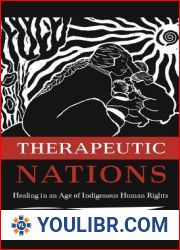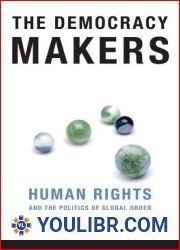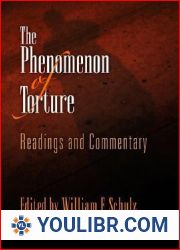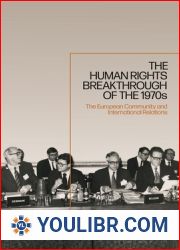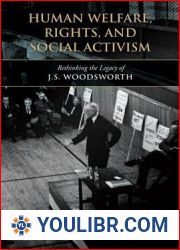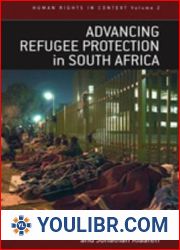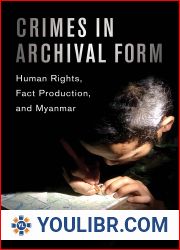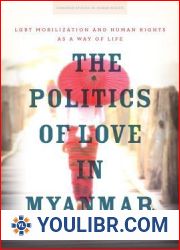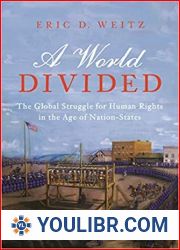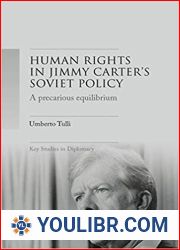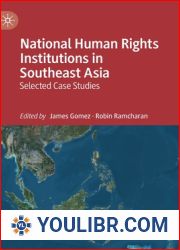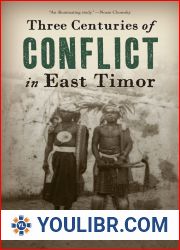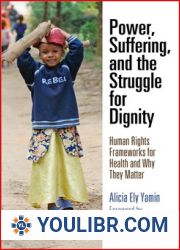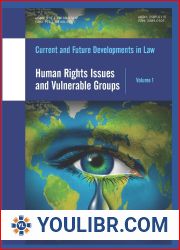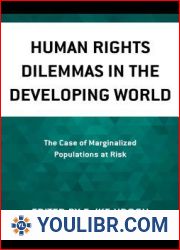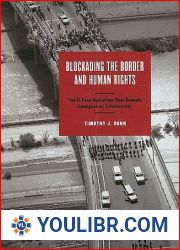
BOOKS - Repression and Resistance: Canadian Human Rights Activists, 1930-1960 (Canadi...

Repression and Resistance: Canadian Human Rights Activists, 1930-1960 (Canadian Social History)
Author: Ross Lambertson
Year: March 16, 2005
Format: PDF
File size: PDF 1.5 MB
Language: English

Year: March 16, 2005
Format: PDF
File size: PDF 1.5 MB
Language: English

The book "Repression and Resistance: Canadian Human Rights Activists, 1930-1960" offers a detailed account of the history of human rights in Canada from 1930 to 1960, focusing on the activists who fought against what they perceived to be the major human rights injustices of the time. The period covers the Quebec Anticommunist Padlock Law, violations of civil liberties during World War II, the post-war attempt to deport Japanese Canadians, campaigns for effective anti-discrimination legislation, and the struggle to obtain a Bill of Rights. The author, Ross Lambertson, uses a variety of sources such as newspaper files, government documents, and collections of personal papers, as well as interviews with former political activists to demonstrate how different groups and individuals were motivated by injustice and fought for human rights despite ideological, cultural, and geographical divisions. The book begins by examining the repressive measures taken by the state during this period, including the use of padlock laws, internment camps, and other forms of censorship and surveillance. It then explores how various activists and organizations responded to these injustices, often with remarkable courage and determination.
В книге «Репрессии и сопротивление: канадские борцы за права человека, 1930-1960 годы» содержится подробный отчет об истории прав человека в Канаде с 1930 по 1960 год, в котором основное внимание уделяется активистам, которые боролись против того, что они считали основной несправедливостью в отношении прав человека в то время. Период охватывает квебекский антикоммунистический закон «Падлок», нарушения гражданских свобод во время Второй мировой войны, послевоенную попытку депортировать японских канадцев, кампании за эффективное антидискриминационное законодательство и борьбу за получение Билля о правах. Автор, Росс Ламбертсон, использует различные источники, такие как газетные файлы, правительственные документы и коллекции личных бумаг, а также интервью с бывшими политическими активистами, чтобы продемонстрировать, как различные группы и отдельные лица были мотивированы несправедливостью и боролись за права человека, несмотря на идеологические, культурные и географические разногласия. Книга начинается с изучения репрессивных мер, принятых государством в этот период, включая использование законов о навесных замках, лагерях для интернированных и других формах цензуры и наблюдения. Затем он исследует, как различные активисты и организации реагировали на эти несправедливости, часто с замечательным мужеством и решимостью.
livre La répression et la résistance : s militants canadiens des droits de la personne, 1930-1960 contient un compte rendu détaillé de l'histoire des droits de la personne au Canada de 1930 à 1960, qui met l'accent sur les militants qui luttaient contre ce qu'ils considéraient comme la principale injustice des droits de la personne à l'époque. La période couvre la loi anti-communiste « Padlock » du Québec, les violations des libertés civiles pendant la Seconde Guerre mondiale, la tentative d'expulsion des Canadiens japonais après la guerre, les campagnes pour une législation efficace contre la discrimination et la lutte pour la Déclaration des droits. L'auteur, Ross Lambertson, utilise diverses sources, telles que des dossiers de journaux, des documents gouvernementaux et des collections de papiers personnels, ainsi que des interviews d'anciens militants politiques, pour démontrer comment divers groupes et individus ont été motivés par l'injustice et se sont battus pour les droits de l'homme, malgré les divisions idéologiques, culturelles et géographiques. livre commence par une étude des mesures répressives prises par l'État au cours de cette période, y compris l'utilisation des lois sur les serrures, les camps d'internement et d'autres formes de censure et de surveillance. Il examine ensuite comment divers militants et organisations ont réagi à ces injustices, souvent avec un courage et une détermination remarquables.
libro «Represión y resistencia: luchadores canadienses por los derechos humanos, 1930-1960» contiene un relato detallado de la historia de los derechos humanos en Canadá desde 1930 hasta 1960, que se centra en los activistas que lucharon contra lo que consideraban la principal injusticia contra los derechos humanos en ese momento. período abarca la ley anticomunista «Padlock» de Quebec, las violaciones de las libertades civiles durante la Segunda Guerra Mundial, el intento de la posguerra de deportar a los canadienses japoneses, las campañas por una legislación efectiva contra la discriminación y la lucha por obtener una Carta de Derechos. autor, Ross Lambertson, utiliza diversas fuentes como archivos de periódicos, documentos gubernamentales y colecciones de papeles personales, así como entrevistas con antiguos activistas políticos para demostrar cómo diversos grupos e individuos fueron motivados por la injusticia y lucharon por los derechos humanos a pesar de las diferencias ideológicas, culturales y geográficas. libro comienza con el estudio de las medidas represivas adoptadas por el Estado durante este período, incluyendo el uso de leyes sobre candados, campos de internamiento y otras formas de censura y vigilancia. Luego explora cómo diversos activistas y organizaciones han respondido a estas injusticias, a menudo con notable valentía y determinación.
O livro «Repressão e Resistência: Ativistas Canadenses dos Direitos Humanos, 1930-1960» traz um relatório detalhado sobre a história dos direitos humanos no Canadá, de 1930 a 1960, focado em ativistas que lutaram contra o que consideravam ser uma injustiça básica em relação aos direitos humanos na época. O período abrange a i Anti-Comunista de Quebec, a violação das liberdades civis durante a Segunda Guerra Mundial, a tentativa pós-guerra de deportar os canadianos japoneses, as campanhas para uma legislação contra a discriminação eficaz e a luta para obter a Carta de Direitos. O autor, Ross Lambertson, usa diversas fontes, como arquivos de jornais, documentos do governo e coleções de papéis pessoais, e entrevistas com antigos ativistas políticos para demonstrar como diferentes grupos e indivíduos foram motivados por injustiças e lutaram pelos direitos humanos, apesar de diferenças ideológicas, culturais e geográficas. O livro começa com o estudo das medidas repressivas tomadas pelo Estado durante este período, incluindo o uso de leis sobre castelos, campos de internação e outras formas de censura e vigilância. Em seguida, ele investiga como vários ativistas e organizações reagiram a essas injustiças, muitas vezes com maravilhosa coragem e determinação.
Il libro «Repressione e resistenza: combattenti canadesi per i diritti umani, 1930-1960» contiene un rapporto dettagliato sulla storia dei diritti umani in Canada dal 1930 al 1960, incentrato sugli attivisti che si sono battuti contro ciò che consideravano come la principale ingiustizia nei confronti dei diritti umani all'epoca. Il periodo copre la legge anti-comunista del Quebec Padlock, le violazioni delle libertà civili durante la seconda guerra mondiale, il tentativo del dopoguerra di deportare i canadesi giapponesi, le campagne per un'efficace legislazione antidiscriminatoria e la lotta per ottenere la Carta dei diritti. L'autore, Ross Lambertson, utilizza diverse fonti, come file di giornali, documenti governativi e raccolte di documenti personali, e interviste con ex attivisti politici, per dimostrare come diversi gruppi e individui siano stati motivati dall'ingiustizia e combattuto per i diritti umani, nonostante le divergenze ideologiche, culturali e geografiche. Il libro inizia con lo studio delle misure repressive adottate dallo Stato in questo periodo, tra cui l'uso delle leggi sui castelli, i campi di internamento e altre forme di censura e sorveglianza. Poi indaga come diversi attivisti e organizzazioni hanno reagito a queste ingiustizie, spesso con notevole coraggio e determinazione.
Das Buch Repression and Resistance: Canadian Human Rights Fighters, 1930-1960 enthält einen ausführlichen Bericht über die Geschichte der Menschenrechte in Kanada von 1930 bis 1960, der sich auf Aktivisten konzentriert, die gegen das kämpften, was sie damals als grundlegende Ungerechtigkeit in Bezug auf die Menschenrechte betrachteten. Der Zeitraum umfasst das antikommunistische Gesetz von Quebec „Padlock“, Verletzungen der bürgerlichen Freiheiten während des Zweiten Weltkriegs, den Versuch der Nachkriegszeit, japanische Kanadier zu deportieren, Kampagnen für eine wirksame Antidiskriminierungsgesetzgebung und den Kampf um eine Bill of Rights. Der Autor, Ross Lambertson, nutzt verschiedene Quellen wie Zeitungsakten, Regierungsdokumente und Sammlungen persönlicher Papiere sowie Interviews mit ehemaligen politischen Aktivisten, um zu zeigen, wie verschiedene Gruppen und Einzelpersonen trotz ideologischer, kultureller und geografischer Unterschiede von Ungerechtigkeit motiviert waren und für Menschenrechte kämpften. Das Buch beginnt mit der Untersuchung der repressiven Maßnahmen, die der Staat in dieser Zeit ergriffen hat, einschließlich der Anwendung der Gesetze über Vorhängeschlösser, Internierungslager und andere Formen der Zensur und Überwachung. Dann untersucht er, wie verschiedene Aktivisten und Organisationen auf diese Ungerechtigkeiten reagiert haben, oft mit bemerkenswertem Mut und Entschlossenheit.
Książka „Represje i opór: kanadyjscy działacze na rzecz praw człowieka, 1930-1960” zawiera szczegółowy opis historii praw człowieka w Kanadzie w latach 1930-1960, skupiając się na działaczach, którzy walczyli z tym, co uważali za podstawowe niesprawiedliwości w zakresie praw człowieka. Okres ten obejmuje quebeckie prawo antykomunistyczne „Padlock”, naruszenia swobód obywatelskich podczas II wojny światowej, powojenną próbę deportacji japońskich Kanadyjczyków, kampanie na rzecz skutecznego prawodawstwa antydyskryminacyjnego oraz walkę o uzyskanie ustawy o prawach. Autorka, Ross Lambertson, wykorzystuje różne źródła, takie jak pliki gazet, dokumenty rządowe i zbiory dokumentów osobistych, a także wywiady z byłymi działaczami politycznymi, aby pokazać, jak różne grupy i jednostki były motywowane niesprawiedliwością i walczyły o prawa człowieka pomimo ideologicznych, kulturowych i geograficznych różnic. Książka rozpoczyna się od zbadania środków represyjnych podjętych przez państwo w tym okresie, w tym stosowania przepisów kłódki, obozów internowania i innych form cenzury i nadzoru. Następnie bada, jak różni działacze i organizacje reagują na te niesprawiedliwości, często z niezwykłą odwagą i determinacją.
הספר ”דיכוי והתנגדות: פעילי זכויות אדם קנדים, 1930-1960” מספק תיאור מפורט של ההיסטוריה של זכויות האדם בקנדה בשנים 1930-1960, תוך התמקדות בפעילים שנלחמו נגד מה שהם ראו כעוולות בסיסיות לזכויות אדם באותה תקופה. התקופה מכסה את החוק האנטי-קומוניסטי של קוויבק ”פאלוק”, הפרות של חירויות אזרחיות במהלך מלחמת העולם השנייה, הניסיון שלאחר המלחמה לגרש את הקנדים היפנים, קמפיינים לחקיקה אפקטיבית נגד אפליה והמאבק להשגת מגילת הזכויות. הסופר, רוס למברטסון, משתמש במקורות שונים, כגון תיקי עיתונים, מסמכים ממשלתיים ואוספים של מאמרים אישיים, כמו גם ראיונות עם פעילים פוליטיים לשעבר, כדי להדגים כיצד קבוצות ויחידים שונים הונעו על ידי אי צדק ונלחמו למען זכויות אדם למרות חילוקי דעות אידיאולוגיים, תרבותיים וגיאוגרפיים. הספר מתחיל בבחינת צעדי דיכוי שננקטו על ידי המדינה בתקופה זו, כולל שימוש בחוקי מנעול, מחנות מעצר וצורות אחרות של צנזורה ומעקב. לאחר מכן הוא בוחן כיצד פעילים וארגונים שונים הגיבו לעוולות אלה, לעתים קרובות באומץ לב ובנחישות יוצאי דופן.''
يقدم كتاب «القمع والمقاومة: نشطاء حقوق الإنسان الكنديون، 1930-1960» سرداً مفصلاً لتاريخ حقوق الإنسان في كندا من 1930 إلى 1960، مع التركيز على النشطاء الذين حاربوا ما اعتبروه مظالم أساسية لحقوق الإنسان في ذلك الوقت. تغطي الفترة قانون كيبيك المناهض للشيوعية «بادلوك»، وانتهاكات الحريات المدنية خلال الحرب العالمية الثانية، ومحاولة ما بعد الحرب لترحيل الكنديين اليابانيين، وحملات من أجل تشريع فعال لمكافحة التمييز والنضال من أجل الحصول على شرعة الحقوق. ويستخدم المؤلف، روس لامبرتسون، مصادر مختلفة، مثل ملفات الصحف والوثائق الحكومية ومجموعات الأوراق الشخصية، وكذلك المقابلات مع نشطاء سياسيين سابقين، لإثبات كيف أن مختلف الجماعات والأفراد كانوا مدفوعين بالظلم وناضلوا من أجل حقوق الإنسان على الرغم من الاختلافات الأيديولوجية والثقافية والجغرافية. يبدأ الكتاب بفحص الإجراءات القمعية التي اتخذتها الدولة خلال هذه الفترة، بما في ذلك استخدام قوانين القفل ومعسكرات الاعتقال وغيرها من أشكال الرقابة والمراقبة. ثم يدرس كيف استجاب العديد من النشطاء والمنظمات لهذه المظالم، غالبًا بشجاعة وتصميم ملحوظين.
"억압과 저항: 캐나다 인권 운동가, 1930-1960" 이라는 책은 1930 년부터 1960 년까지 캐나다의 인권 역사에 대한 자세한 설명을 제공하며, 기본적인 인권 불의로 본 것에 맞서 싸운 운동가들에 초점을 맞추고 있습니다. 이 기간에는 퀘벡 반 공산주의 법 "Padlock", 제 2 차 세계 대전 중 시민의 자유 위반, 전후 일본인 추방 시도, 효과적인 반 차별 법안 캠페인 및 권리 장전 투쟁이 포함됩니다. 저자 Ross Lambertson은 신문 파일, 정부 문서 및 개인 신문 수집, 전 정치 활동가와의 인터뷰와 같은 다양한 출처를 사용하여 이데올로기에도 불구하고 다양한 그룹과 개인이 불의에 의해 동기를 부여하고 인권을 위해 싸우는 방법을 보여줍니다. 문화적, 지리적 차이. 이 책은 자물쇠 법, 억류 수용소 및 기타 형태의 검열 및 감시를 포함하여이 기간 동안 국가가 취한 억압 조치를 검토하는 것으로 시작됩니다. 그런 다음 다양한 활동가와 조직이 이러한 불의에 어떻게 대응했는지, 종종 놀라운 용기와 결단력으로 조사합니
本「抑圧と抵抗:カナダ人権活動家、1930-1960」は、1930から1960までのカナダの人権の歴史を詳しく説明しており、当時の基本的な人権不正と見ていたものと戦った活動家に焦点を当てています。この期間は、ケベックの反共産主義法「南京錠」、第二次世界大戦中の市民の自由の侵害、戦後の日本のカナダ人を追放しようとする試み、効果的な反差別法のキャンペーン、権利章典の取得のための闘争をカバーしています。著者のロス・ランバートソン(Ross Lambertson)は、新聞ファイル、政府文書、個人論文の収集、元政治活動家へのインタビューなど、様々な情報源を使用して、様々なグループや個人がイデオロギー的、文化的、地理的な違いにもかかわらず、不正によって動機づけられ、人権のために戦ったことを示している。この本は、南京錠の法律、収容所、および他の形態の検閲と監視の使用を含む、この期間に州が講じた抑圧的な措置を検討することから始まります。その後、様々な活動家や組織がこれらの不正にどのように対応し、しばしば顕著な勇気と決意をもって対応してきたかを調べます。
《鎮壓與抵抗:1930至1960加拿大人權戰士》一書詳細介紹了1930至1960加拿大人權史,重點是反對他們當時認為的主要人權不公正現象的活動家。這一時期包括魁北克的反共法律「Padlock」,第二次世界大戰期間侵犯公民自由,戰後驅逐日本加拿大人的企圖,爭取有效的反歧視立法的運動以及爭取獲得《權利法案》的鬥爭。作者羅斯·蘭伯森(Ross Lambertson)使用各種來源,例如報紙文件,政府文件和個人論文集,以及對前政治活動家的采訪,以展示盡管存在意識形態,文化和地理差異,但不同的團體和個人如何受到不公正的激勵並爭取人權。該書首先研究了國家在此期間采取的鎮壓措施,包括使用有關幕後城堡,拘留營和其他形式的審查和監視的法律。然後,他探討了各種活動家和組織如何以非凡的勇氣和決心應對這些不公正現象。










